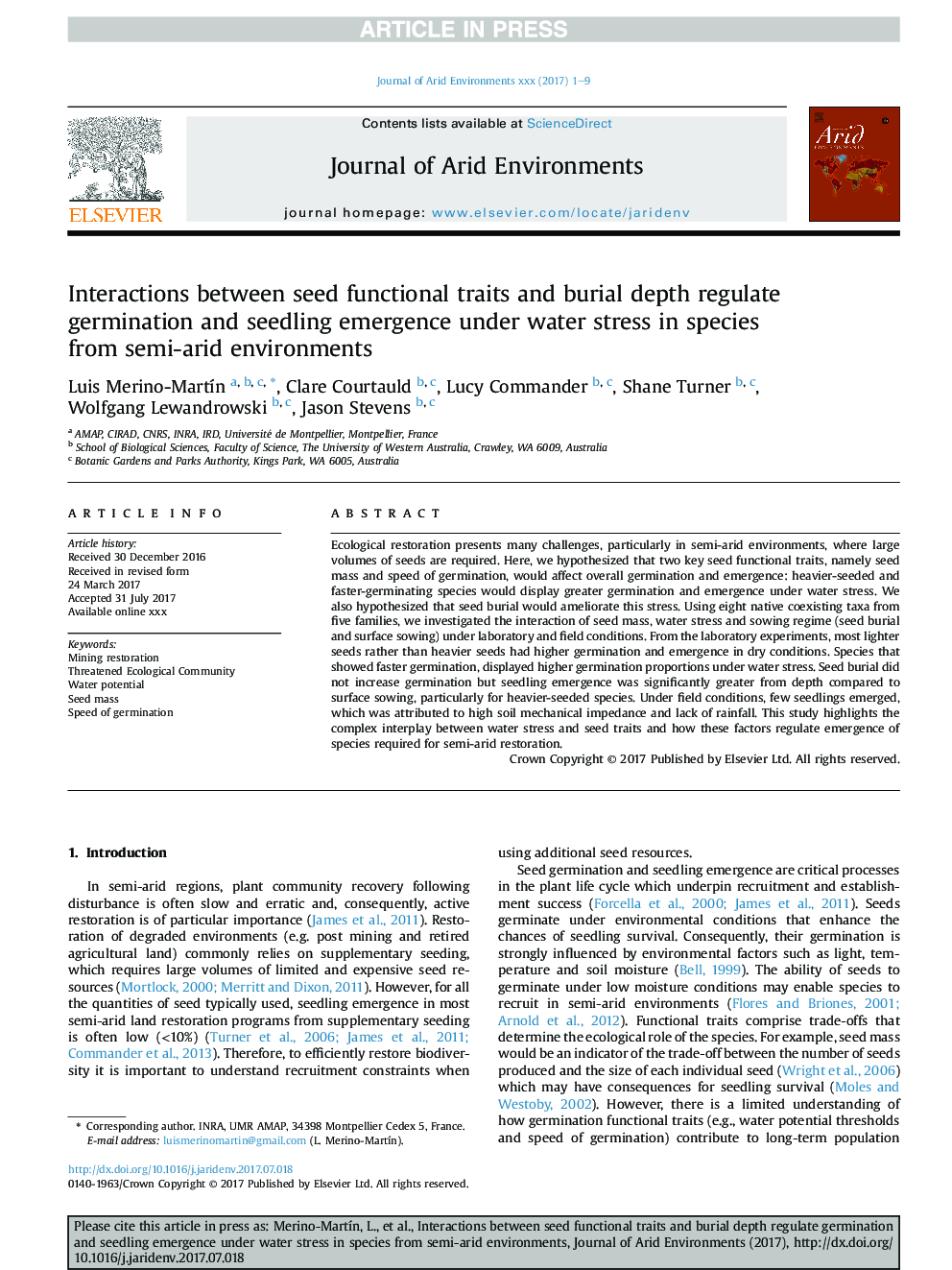| Article ID | Journal | Published Year | Pages | File Type |
|---|---|---|---|---|
| 5744259 | Journal of Arid Environments | 2017 | 9 Pages |
Abstract
Ecological restoration presents many challenges, particularly in semi-arid environments, where large volumes of seeds are required. Here, we hypothesized that two key seed functional traits, namely seed mass and speed of germination, would affect overall germination and emergence: heavier-seeded and faster-germinating species would display greater germination and emergence under water stress. We also hypothesized that seed burial would ameliorate this stress. Using eight native coexisting taxa from five families, we investigated the interaction of seed mass, water stress and sowing regime (seed burial and surface sowing) under laboratory and field conditions. From the laboratory experiments, most lighter seeds rather than heavier seeds had higher germination and emergence in dry conditions. Species that showed faster germination, displayed higher germination proportions under water stress. Seed burial did not increase germination but seedling emergence was significantly greater from depth compared to surface sowing, particularly for heavier-seeded species. Under field conditions, few seedlings emerged, which was attributed to high soil mechanical impedance and lack of rainfall. This study highlights the complex interplay between water stress and seed traits and how these factors regulate emergence of species required for semi-arid restoration.
Related Topics
Physical Sciences and Engineering
Earth and Planetary Sciences
Earth-Surface Processes
Authors
Luis Merino-MartÃn, Clare Courtauld, Lucy Commander, Shane Turner, Wolfgang Lewandrowski, Jason Stevens,
